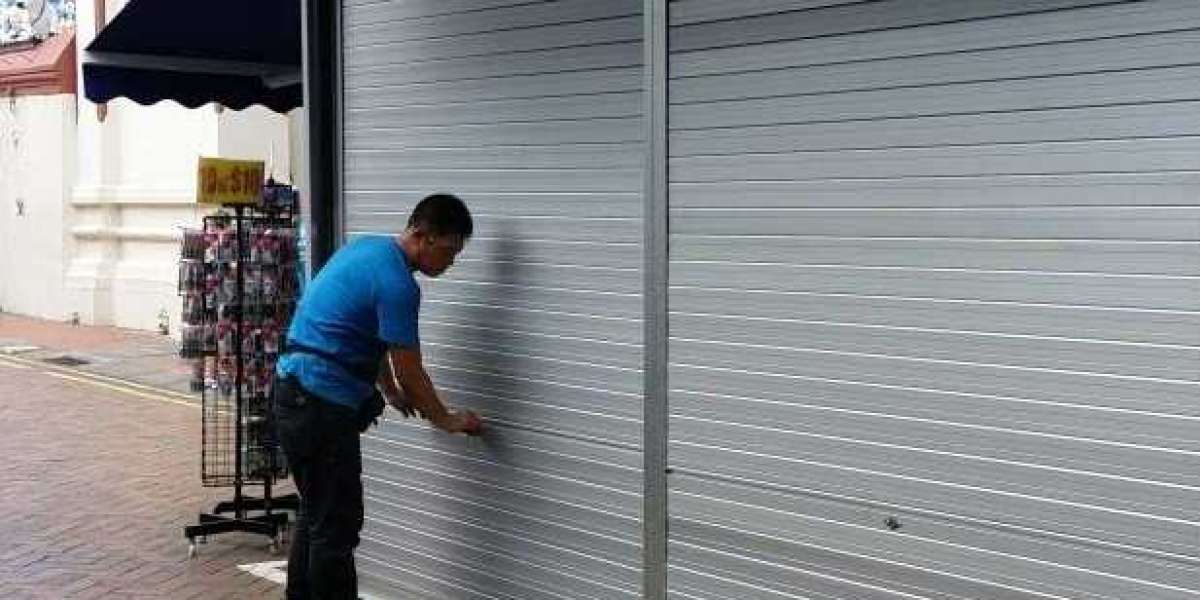Roller shutters are a vital component of many homes and businesses, providing security, privacy, and protection from the elements. Over time, however, these shutters can experience wear and tear, leading to the need for repairs. This guide will walk you through everything you need to know about roller shutter repairs, from common issues to DIY solutions and when to call a professional.
Understanding Roller Shutters
Before diving into repairs, it's essential to understand what roller shutters are and how they work. Roller shutters are typically made of horizontal slats (or bars) hinged together. They are raised to open and lowered to close, often by a manual or motorized mechanism. They can be used on doors and windows, providing an additional layer of security and insulation.
Common Roller Shutter Problems
1. Stuck Shutters
One of the most common issues is shutters getting stuck, either in the open or closed position. This can be due to dirt and debris in the tracks, worn-out components, or issues with the mechanism itself.
2. Noisy Operation
If your roller shutters make unusual noises when operating, it could be due to loose parts, lack of lubrication, or misalignment in the tracks.
3. Motor Issues
Motorized roller shutters can face specific problems like the motor not working, intermittent functioning, or complete failure. This could be due to electrical issues, worn-out motors, or problems with the control unit.
4. Damaged Slats
Over time, individual slats can get bent or damaged. This not only affects the appearance but can also impair the functioning of the shutter.
5. Broken Cords or Springs
Manual roller shutters rely on cords or springs for operation. These can wear out or break over time, requiring replacement.
DIY Roller Shutter Repairs
1. Cleaning and Lubrication
Often, simple maintenance can solve many issues. Clean the tracks and slats to remove dirt and debris. Use a suitable lubricant on the moving parts to ensure smooth operation.
- Tools Needed: Soft cloth, mild detergent, lubricant spray (like WD-40).
- Steps:
- Wipe down the tracks and slats with a soft cloth and mild detergent.
- Apply a light spray of lubricant to the moving parts.
2. Adjusting the Tracks
If the shutter is misaligned, you can adjust the tracks to ensure it moves smoothly.
- Tools Needed: Screwdriver, level.
- Steps:
- Check the alignment of the tracks with a level.
- Loosen the screws holding the tracks and adjust them until they are perfectly aligned.
- Tighten the screws back in place.
3. Replacing Damaged Slats
If slats are damaged, they may need replacement.
- Tools Needed: Screwdriver, replacement slats.
- Steps:
- Identify the damaged slats and remove them using a screwdriver.
- Insert the new slats and secure them in place.
4. Repairing or Replacing Cords and Springs
Worn-out cords or springs can be replaced to restore functionality.
- Tools Needed: Replacement cords/springs, screwdriver.
- Steps:
- Open the shutter housing to access the cords or springs.
- Remove the damaged parts and replace them with new ones.
- Reassemble the housing and test the shutter.
When to Call a Professional
1. Electrical Issues
If you suspect electrical problems with motorized shutters, it's best to call a professional. Handling electrical components without proper knowledge can be dangerous.
2. Complex Mechanical Problems
Some mechanical issues, like a completely jammed shutter or a broken motor, may require specialized tools and expertise to fix.
3. Regular Maintenance
For ongoing maintenance and to prevent future issues, consider scheduling regular check-ups with a professional. They can spot potential problems early and ensure your shutters remain in good condition.
Preventive Maintenance Tips
1. Regular Cleaning
Keep your roller shutters clean by regularly removing dust and debris from the tracks and slats.
2. Lubrication
Periodically lubricate the moving parts to ensure smooth operation and reduce wear and tear.
3. Inspection
Inspect your shutters regularly for signs of damage or wear. Early detection can prevent minor issues from becoming major problems.
4. Professional Servicing
Schedule professional servicing at least once a year to ensure your roller shutters are in optimal condition.
Conclusion
Roller shutters are an excellent investment for security and convenience, but like any mechanical system, they require maintenance and occasional repairs. By understanding common problems and knowing some basic DIY fixes, you can keep your shutters in good working order. However, don't hesitate to call a professional for more complex issues or regular maintenance. With proper care, your roller shutters will provide years of reliable service.






